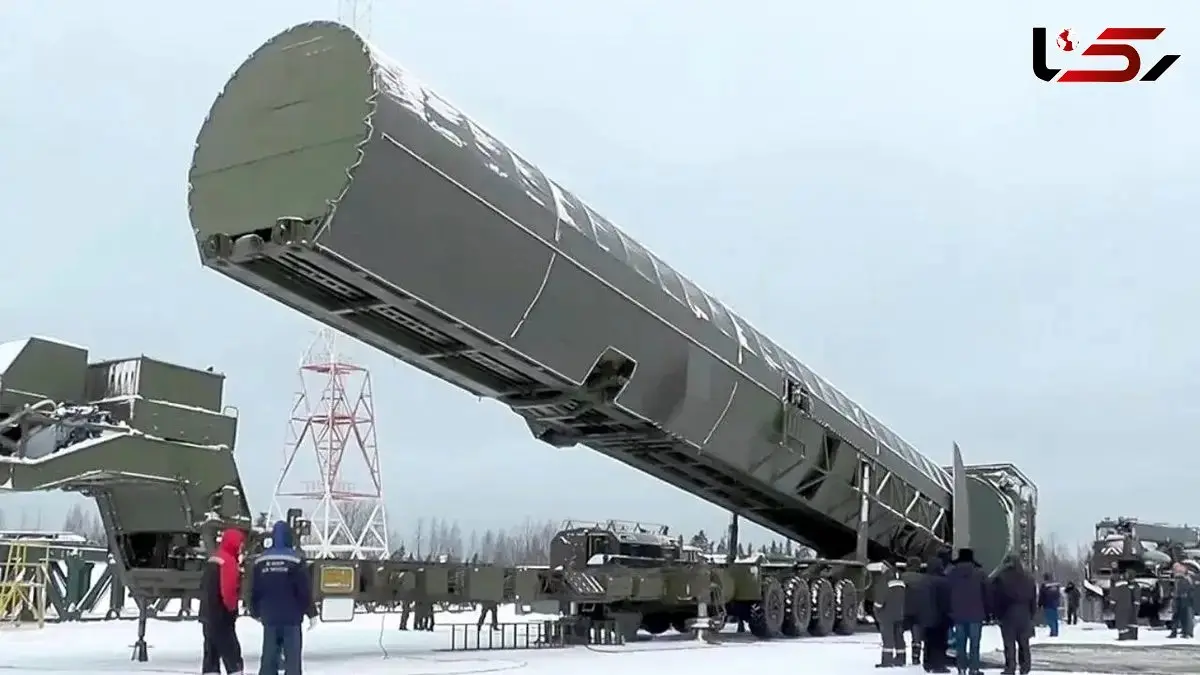NATO Threatened by “Flying Chernobyl”; Russia’s Nuclear Missile with Range Beyond Imagination
Rokna Political Desk: Russia has developed the nuclear cruise missile “Burevestnik,” creating an unprecedented threat with unlimited range and high maneuverability, which NATO considers a serious challenge to European security.

Russia has completed the development of its nuclear cruise missile, known as “Burevestnik,” a weapon that NATO views as a major threat to European security due to its unlimited range and high maneuvering capability.
According to Khabar Online, citing Euronews, a confidential document from the North Atlantic Treaty Organization (NATO) indicates that this missile can fly at speeds exceeding 900 kilometers per hour, be launched from mobile platforms, and freely change its trajectory in the air.
Capabilities of the Burevestnik Missile
The nuclear reactor installed on the missile grants it an almost unlimited range, enabling it to fly tens of thousands of kilometers without refueling, remain airborne for extended periods, change direction mid-flight, and attack targets from any angle.
NATO’s assessment states: “Given the range and extraordinary maneuverability of this system, the existing challenges will be significantly increased.”
According to the document, Burevestnik can follow indirect and extended flight paths to evade NATO’s air defense systems, including southern and polar routes with minimal radar coverage.
NATO believes that full operational deployment of this missile would pose a major challenge for Europe, as the alliance would face an almost uncontrollable threat. However, some experts note that because the missile does not reach hypersonic speeds, the longer it remains airborne, the more vulnerable it becomes.
Despite these concerns, some analysts question the actual value of this weapon.
Fabian Hoffmann, a nuclear project researcher at the University of Oslo, wrote on X that Burevestnik is a “useless and unnecessary weapon.”
In one of the missile’s tests in 2019, five Russian scientists were killed. Reports indicate that some staff were thrown into the sea and a subsequent increase in radiation levels was recorded in the area. It remains unclear whether these exposures caused any fatalities.
The United States abandoned the idea of combining a nuclear reactor with a nuclear weapon in the 1950s due to the extremely high environmental and technical risks.
“Flying Chernobyl” in the Sky?
William Alberk, senior analyst at the Pacific Forum and former NATO arms control director, stated: “The greatest danger is at the moment of launch. If the missile is targeted or malfunctions, its radioactive materials could disperse widely, like a small Chernobyl in the sky.”
Meanwhile, independent nuclear expert Paul Podvig commented on the potential hazards of launching such a missile: “I approach this cautiously and would not call this weapon a ‘flying Chernobyl.’ Significant radioactive leaks would be immediately detectable. However, a missile falling during launch or flight could be more dangerous than normal operation.”
Assessment of Another New Russian Missile
NATO experts have also examined Russia’s new mobile medium-range missile, named Oreshnik, first tested in Ukraine in November 2024.
According to Western assessments, this missile has a range of up to 5,500 kilometers and can carry various warheads, including nuclear.
NATO’s document states: “The ability to target any point in Europe, combined with the high mobility of its launch platform, provides a high survival rate for this system. Uncertainty regarding the type of warheads used poses a serious challenge for NATO’s defense systems.”
Send Comments